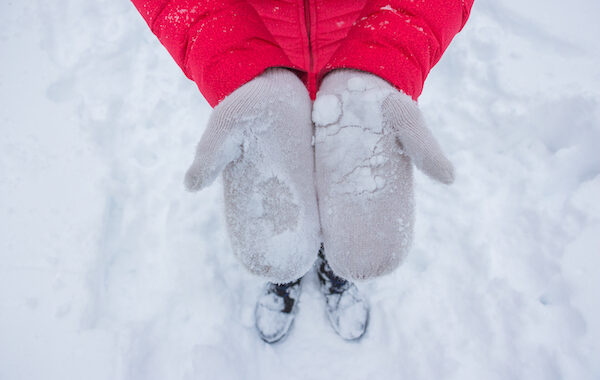Frostbite happens due to your skin’s exposure to cold temperatures. The body responds to cold by constricting blood vessels to preserve heat. However, if you expose tissue to extreme cold for an extended period, the blood vessels can no longer supply enough blood to the tissue, and cell death can occur.
What Is Frostbite?
Frostbite most often affects the extremities, such as the hands, feet, ears, and nose. People exposed to cold weather for extended periods, such as those working outdoors or participating in winter sports, are at increased risk for frostbite.
Even if you’re only attending an outdoor event or conducting activities in freezing weather, you will want to dress appropriately to avoid frostbite. It can sneak up on people who notice intense symptoms suddenly.
Frostbite Symptoms
Symptoms of frostbite include numbness, tingling, and pain in the affected area. The skin may appear pale or red, and blisters may form. In severe cases, the tissue may become stiff and black.
Treatment for frostbite includes rewarming the affected area using warm water or a warm compress. Avoid using heat lamps, heating pads, or direct fire to thaw your skin, as this can cause further damage. If blisters have formed, do not puncture them.
If you think you have frostbite, seek medical attention immediately. Frostbite can lead to permanent tissue damage and, in extreme cases, amputation.
Prevent Frostbite
Wear warm footwear is the best way to prevent frostbite on your feet. Since direct exposure to blistering cold weather causes the problem, wearing cold weather socks and shoes is the best bet. Wear appropriate boots or shoes if you know you’ll be standing in snow or outside on a freezing day.
Wear Socks That Wick Away Moisture
First, socks should use a material that will wick away moisture, like wool or synthetic fabrics. That will help keep your feet dry, which is vital because wet skin is more susceptible to frostbite.
Thick Socks Provide Insulation
Second, make sure your socks are thick enough to provide insulation. A good rule of thumb is to wear two pairs of socks if you’ll be in freezing weather for an extended time. It’s better to dress too warm rather than arrive at a destination to realize it’s colder than anticipated. If you’re planning activities that have you outside for long durations during cold weather, keeping your feet warm is your best defense against frostbite.
Waterproof, Well-Insulated Shoes Are Crucial
Third, your shoes should be waterproof and well-insulated. Choosing practical footwear keeps your feet dry and warm, providing maximum comfort and protection against extreme weather.
Boot Lines And Insoles Provide Protection
You may also consider wearing footwear products like boot liners and insoles, which provide the highest support. These items help further help to insulate your feet and prevent frostbite.

